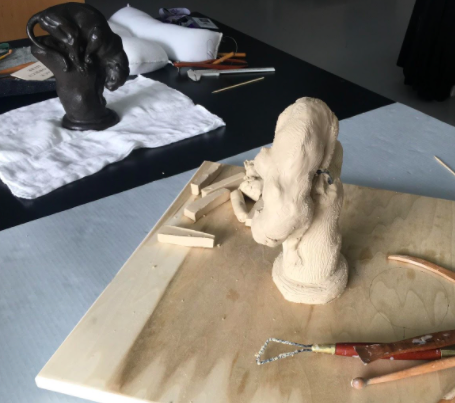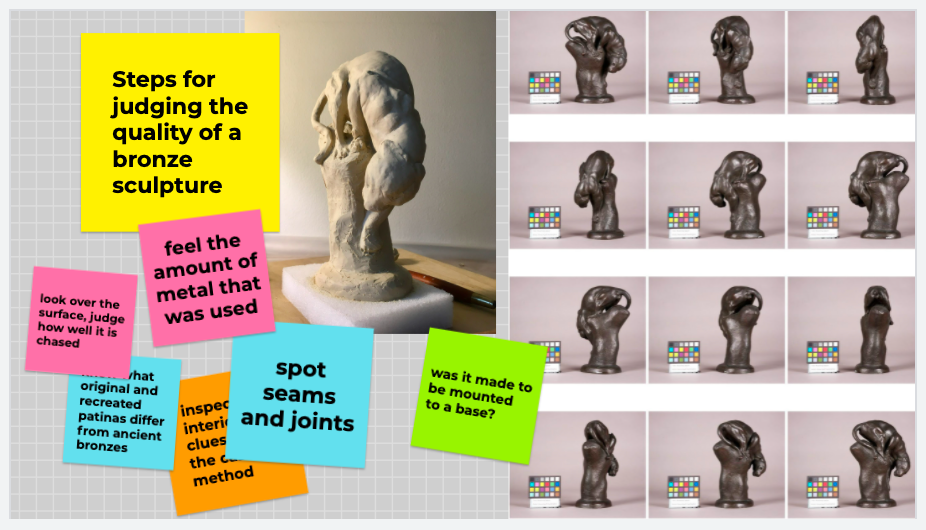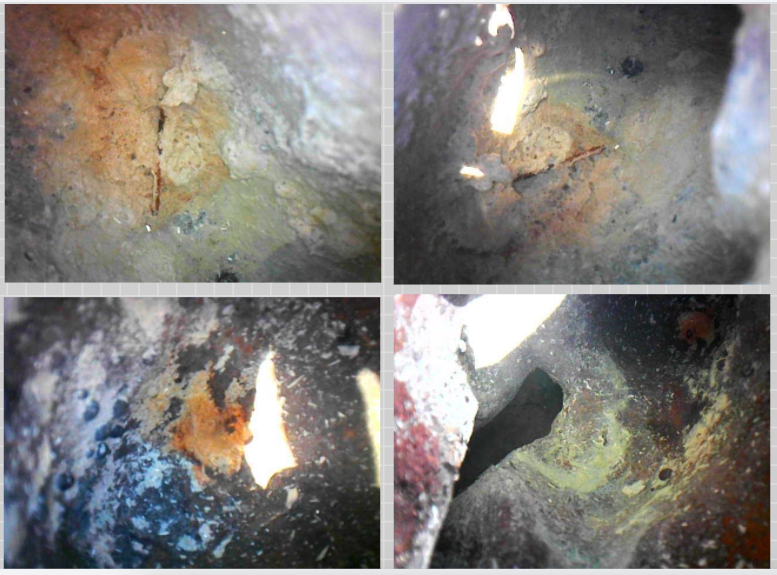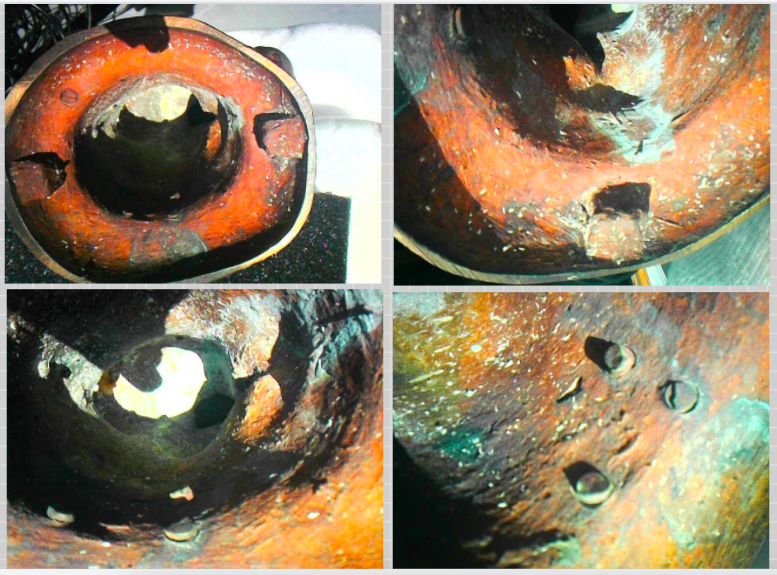As a conservation technician for the textiles, objects, and paintings conservation labs at the museum, I help care for the collection by carrying out conservation treatments while preparing to apply to art conservation graduate programs. During an early morning round while routinely monitoring the collection in the Palace, I spotted the Reaching Jaguar by Anna Vaughn Hyatt Huntington as I was walking into the Vatichino on the first floor. The jaguar reaches down from the top of a stump in a serene but predatory manner. The small bronze caught my eye because the jaguar’s pose represents a moment of reflection, implying an action without actually showing it taking place—the calm before the storm, or in this case, the pounce.
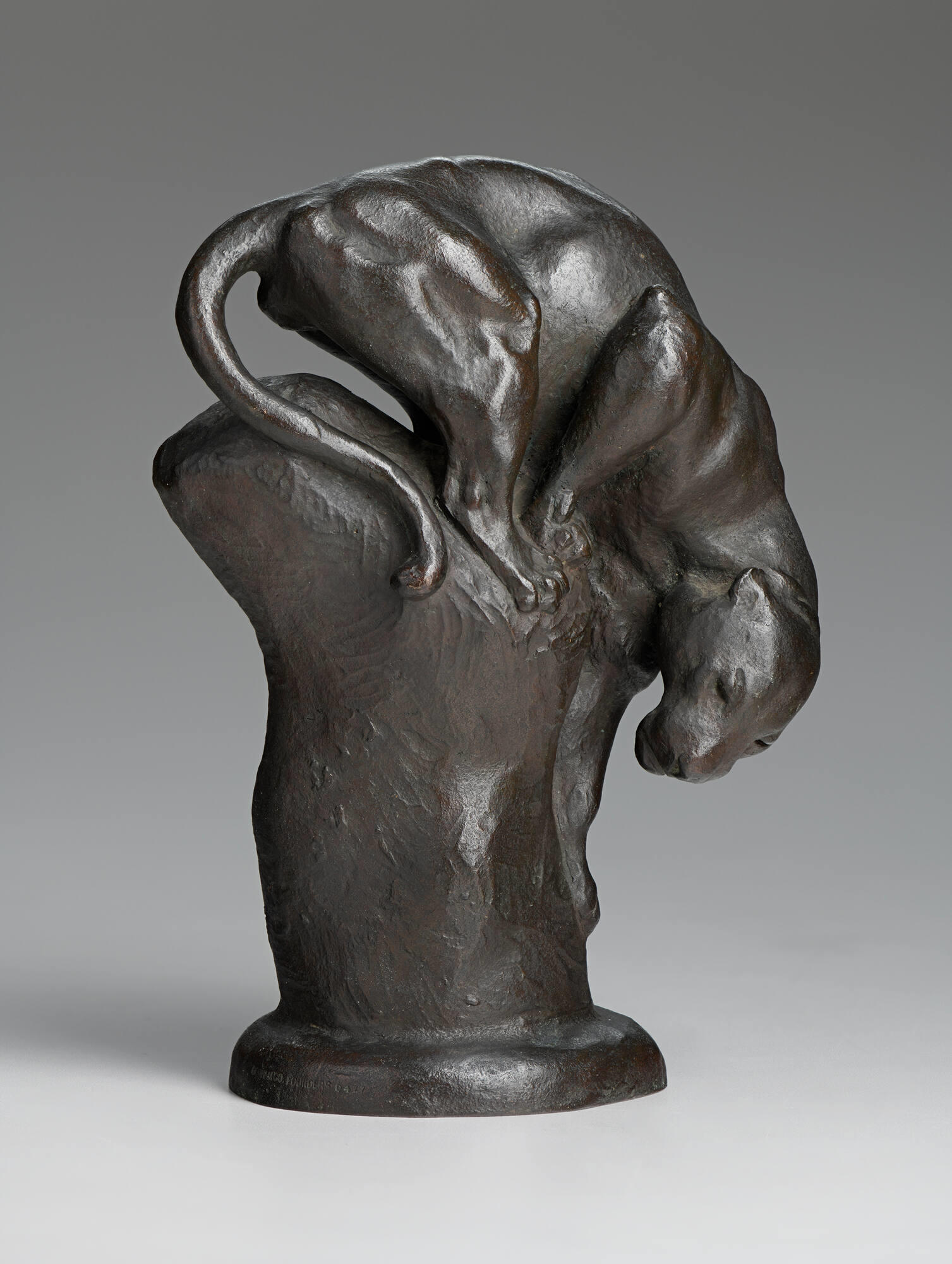
Anna Hyatt Huntington (American, 1876–1973), Reaching Jaguar, before 1918. Bronze
Isabella Stewart Gardner Museum, Boston. See it in the Vatichino
Animals were one of Huntington’s favorite subjects. She attended several progessive zoological gardens to make studies of live animals in captivity. She befriended the fierce Paraguayan jaguar, Señor Lopez, at the New York Zoological Gardens in the Bronx (now known as the Bronx Zoo). The zoo encouraged artists to work in its special facilities and collected many of these works to display in its grounds. Señor Lopez became Huntington’s main subject and provided her with inspiration for nearly four decades. He was even the basis for two carved stone jaguars that she sculpted to flank the zoo’s entrance. As a sculptor, Huntington accomplished many notable feats including representation in one of the most famous zoos in the world.
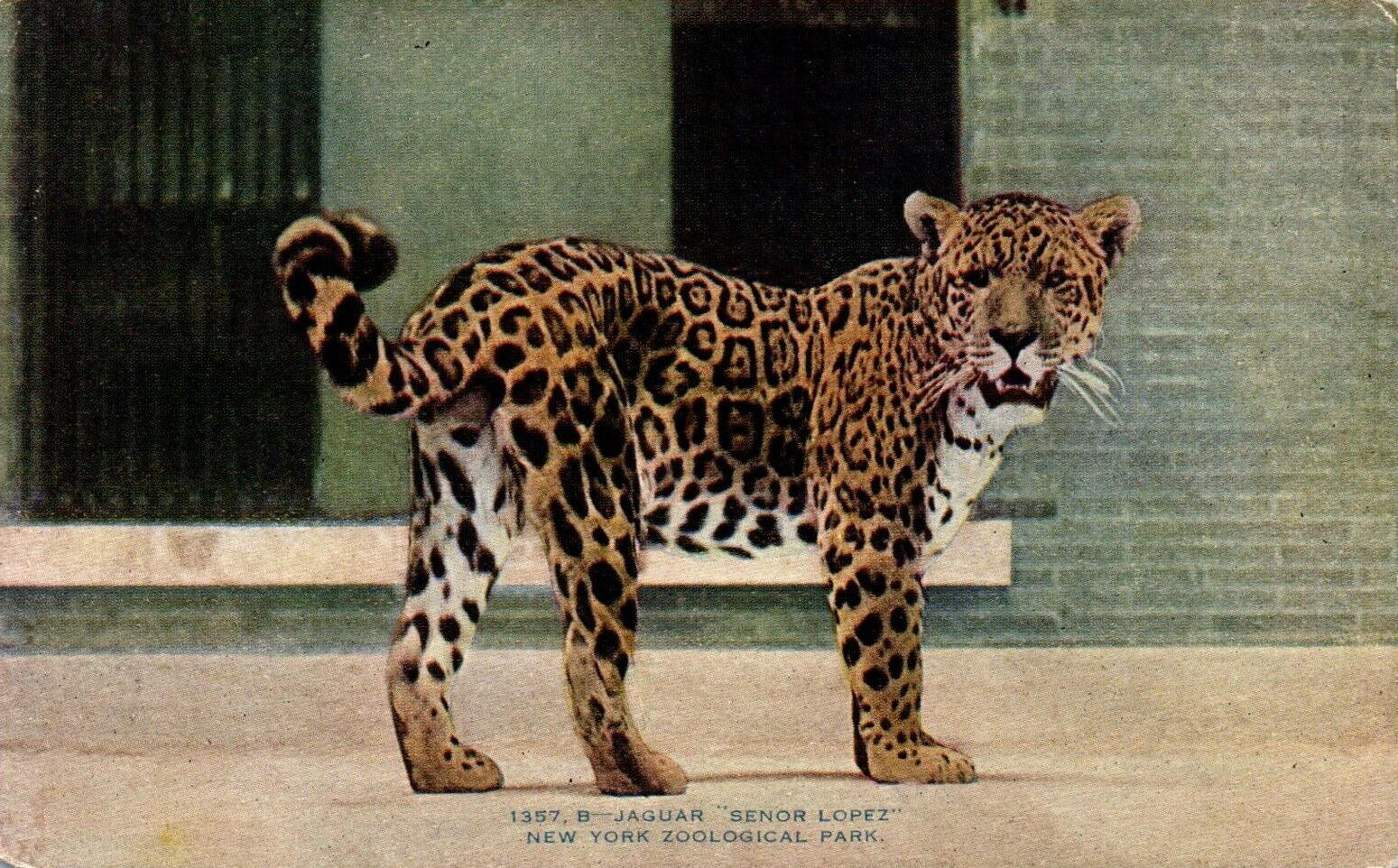
Postcard of the Paraguayan jaguar, Señor Lopez, at the New York Zoological Gardens in the Bronx
Her father, a professor of zoology and paleontology, is often credited for sparking her artistic interests.¹ But Huntington stated that her grandmothers Elizabeth Randolph King Hyatt and Lydia Reynolds Beebe, along with her mother Audella Beebe Hyatt and older sister Harriet Hyatt, educated and empowered her from an early age—fostering the confidence to venture into the often professionally frustrating life of a female sculptor in 1900’s America.² The gamble to undertake a male-dominated field paid off, and by her early twenties she was a highly paid professional artist, earning more than $50,000 a year.³ However, women artists at the time still faced adversity and sexism. One notable episode occured in 1916 when the Paris Salon, a highly competitive art competition, granted Huntington an honorary mention for her full-scale plaster version of the bronze equestrian statue of Joan of Arc. She was denied the top prize, because the jury believed it impossible for a woman to have carried out all of the work on her own.
A great deal of craftsmanship is required to produce pristine bronze casts. This highly skilled industry continues to be male-dominated today—before coming to the Gardner, I worked in a fine art foundry fabricating art for contemporary artists. One of the graduate programs I'm interested in requires applicants to submit the reproduction of an artwork by a recognizable artist. I chose to reproduce the Gardner’s Reaching Jaguar hollow-cast fabricated by the Gorham & Company Bronze Division. The opportunity to make this replica combined my love for the collection and admiration for female sculptors. To start, the cast was brought into the conservation lab and examined using analytical tools like a borescope—an optical device—to inspect the inside and outer surfaces.
When studying a small bronze cast, judging its quality requires some fine art fabrication knowledge in order to identify the casting process used. Inspecting the outer surface for seams, cracks, and porosities on the metal surface is key, and the interior surface should be inspected for marks characteristic of a casting process.⁴ As expected, the Reaching Jaguar has accumulated clues in the interior surface. These include encrusted metal pins that used to hold the wax intermodel in registration with the solidified investment core material in place while the wax was burned out and before the alloy gets poured into the mold. Likewise, repairs and plugs around the inside bottom rim are evidence that the piece was likely fabricated using the indirect casting method.
Because of the elegant downwards movement of the reaching jaguar, the figure’s weight needed support from an armature while the artist sculpted. Marks on the exterior of the bronze cast illustrate this evidence. The mold fabricated by the foundry picked up detailed clues from the figure and stump of the artist’s model supporting that these were cut into to eliminate their supporting armature. Following the indirect casting process, a wax intermodel is fashioned by the foundry from the original artist model with the use of mold making techniques. A hollow-cast in wax is then pulled from the piece-mold. And the wax fragments are then pieced back together by warming them in hot water and pressing the joints together, or more simply with the quick use of hot tools. The wrinkling of the wax on the shoulder of the jaguar could be a result of rejoining.
A system of running wax sprues are then positioned at various places of the wax intermodel to help control and regulate the flow of the molten metal allowing entrapped air to escape, minimizing porosities in the bronze’s surface. The wax intermodel gets covered in a ceramic slurry also known as “investment” and fired to bake. During baking the wax burns out, leaving space for the molten metal to flow through and fully fill the ceramic shell. After the metal cools, the ceramic shell is broken off and separated from the outer surface. Depending on the foundry and by the artist’s request, the final cast gets chased, finished, patinated, waxed, or coated to protect the sheen and surface of the alloy.

Greta Llanes working on the Reaching Jaguar replica wax intermodel
The replica was first sculpted in clay in tandem with the original. A wax intermodel was then fashioned from a mold and prepped for the final casting. The project will serve as a teaching aid of the bronze casting process for the conservation department and can help guide future researchers of Huntington’s work alike.
You May Also Like

Read More on the Blog
Anna Hyatt Huntington: World War I Memorial To the Sons of Gloucester

Explore the Collection
Postcard of Anna Hyatt's Joan of Arc Sculpture

Read More on the Blog
Isabella and the Hispanic Society
¹ “Anna Hyatt Huntington,” National Museum for Women in the Arts, accessed July 2021. https://nmwa.org/art/artists/anna-hyatt-huntington
² Anne Higonnet,“Wild at heart: Rediscovering the sculpture of Anna Hyatt Huntington,” Magazine Antiques, accessed July 2021. https://www.themagazineantiques.com/article/wild-at-heart-rediscovering-the-sculpture-of-anna-hyatt-huntington/
³ Anne Higonnet, “Anna Hyatt Huntington, Meet New York City,” Miriam and Ira D. Wallach Art Gallery, Columbia University, accessed July 2021. http://www.columbia.edu/cu/wallach/exhibitions/Anna-Hyatt-Huntington/essays/#_ftn2
⁴ Janis Conner and Thayer Tolles, “Double take: A closer look at American bronze sculpture,” Magazine Antiques, accessed July 2021. https://www.themagazineantiques.com/article/double-take-a-closer-look-at-american-bronze-sculpture/
